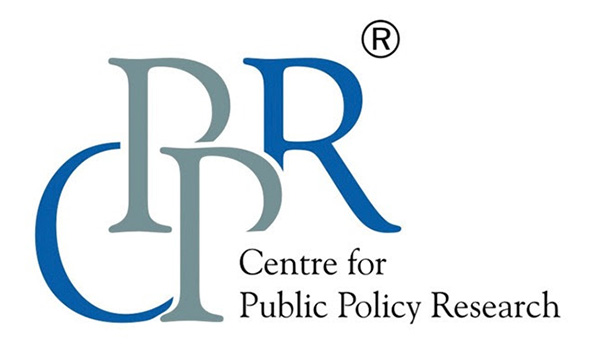Articles

The Implementation Gap: Why Strong Laws Aren’t Reducing Crimes Against Women in Kerala
September 19, 2025
EP 64 | Prospects and Pressures of Low-Fee Private Schools in India | Policy Beyond Politics
September 22, 2025National Education Policy (NEP) 2020 Turns Five: Tight Goals, Loose Execution

- Five years ago, India unveiled the National Education Policy (NEP) 2020, a landmark blueprint to overhaul the nation’s education system from preschool to higher education.
- It promised ambitious transformations through curriculum redesign, foundational learning, decentralised governance, and equitable regulation.
- Halfway through its first decade, however, reforms remain partial, with implementation selective and inconsistent.
Learning Outcomes and Governance Gaps under NEP 2020
One of the National Education Policy’s central objectives was to improve learning outcomes. To achieve this, the policy proposed reforms ranging from curriculum redesign and pedagogical innovation to regulatory restructuring. While many states have initiated curriculum reforms, progress on governance and regulatory overhaul has been limited, with little change in how schools are managed, monitored, or held accountable.
Improving governance is essential if learning outcomes are to improve meaningfully. A structural conflict of interest persists in the school governance architecture of most Indian states. For instance, the Directorate of School Education (DSE) typically performs multiple, overlapping functions. The DSE directly administers and funds government schools, and it also regulates schools by setting policies and ensuring compliance. Importantly, it often assesses student learning outcomes and school performance under its jurisdiction.
Because the same body that manages and funds schools is also responsible for evaluating their performance, there is a risk of biased or overly optimistic assessments, as the DSE may have incentives to present better results or avoid strict scrutiny to justify its management and funding decisions.
A study by economist Abhijeet Singh in Madhya Pradesh revealed this problem. When students were retested under independent conditions using the same questions, their actual scores were nearly half of what official data had reported. Such discrepancies undermine the accuracy of assessments, making it difficult to diagnose learning gaps and design effective interventions.
Role of State School Standards Authorities (SSSAs)
Section 8 of the National Education Policy 2020 identified conflicts of interest, over-centralisation, and systemic inefficiencies as features of the current regulatory system that undermine effective school governance. To address this, NEP proposed a “light but tight” regulatory framework focused on self-regulation, self-disclosure, and the establishment of an independent body called State School Standards Authorities (SSSAs) to set uniform quality benchmarks across schools.
The public and private schools would be accredited based on the best practices they implement, the performance of their students, and their improvement over time. The performance would be assessed through multiple surveys, such as National Assessment Surveys or State Assessment Surveys, and other evaluation metrics.
It also envisions a clear separation of powers, with the Education Department responsible for managing government schools, the SSSA serving as an independent regulator for all schools, and the State Council of Educational Research and Training (SCERT) focusing on curriculum design. This separation of powers, with the independent SSSA as an impartial regulator, promises a more trustworthy stewardship of student learning assessments.
National Education Policy and the Regulation of Private Schools
Regulatory reform is particularly relevant for the increasing number of low-fee private schools serving low-income communities. Under the existing framework, which is governed by over 145 state Acts and 100 rulebooks, recognition is primarily based on input norms such as land area, building specifications, and other infrastructure requirements, rather than learning outcomes or child safety.
The National Education Policy 8.8 importantly proposed flexible and context-sensitive input norms, stating,
“The overemphasis on inputs, and the mechanistic nature of their specifications – physical and infrastructural, will be changed and requirements made more responsive to realities on the ground.”
This approach could enable recognition of a wider range of private schools that may deliver strong learning outcomes but fall short of rigid infrastructure standards.
The need for reform is urgent. In 2024, the Ministry of Education identified 22,298 private schools as “unrecognised”, affecting 2.4 million students and 160,000 teachers. Notably, these schools were flagged not for poor academic outcomes but for failing to comply with prescriptive infrastructure norms under the Right to Education (RTE) Act.
Way Forward for Implementing the National Education Policy
By establishing SSSAs and shifting the focus from inputs to outcomes, NEP 2020 offers a more equitable and transparent regulatory framework. Yet, no state has taken concrete steps to implement the SSSA model. School regulation continues to be governed by multiple Acts and rules, creating inconsistency and weak accountability.
Realising the goals of the NEP will require state governments to treat the establishment of SSSAs as a foundational reform. It calls for a perspective shift—education must be seen as a shared responsibility between public and private sectors, with both held accountable for student learning.
The article was originally published in the Hindustan Times.
Nissy Solomon is an Hon. Trustee & Project Lead, and Afiya Biju is a Project Assistant at the Centre for Public Policy Research (CPPR), Kochi, Kerala, India.
Views expressed by the authors are personal and need not reflect or represent the views of the Centre for Public Policy Research.


